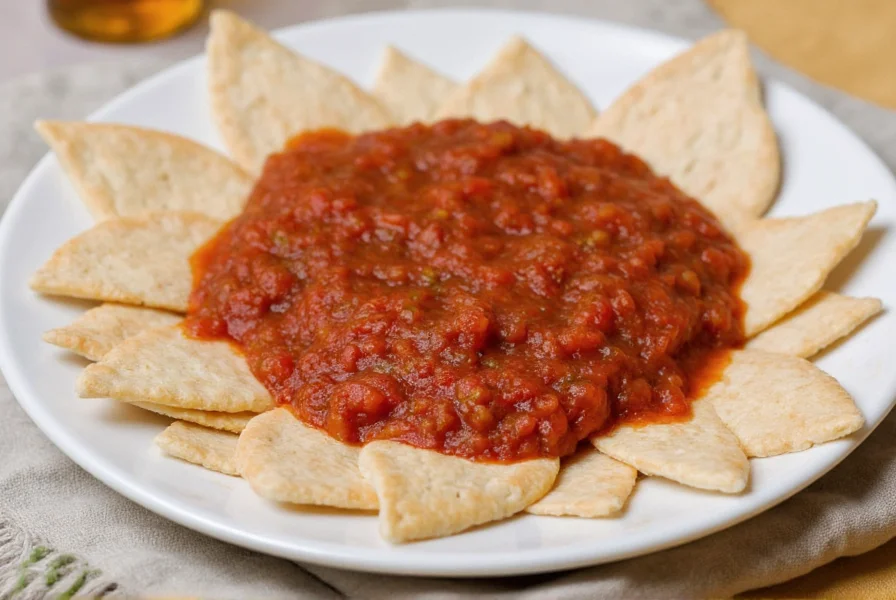Table of Contents
What is Red Pepper Lawrence? Understanding the Spice That's Changing Cooking
Red pepper Lawrence is a premium chili pepper variety known for its balanced heat and complex flavor profile. With a Scoville rating of 50,000-100,000 SHU, it sits between jalapeños and habaneros in heat intensity while offering superior flavor versatility. Unlike common misconceptions, "Lawrence" refers to a specific quality standard for red pepper flakes rather than a single pepper variety, making it a trusted choice for chefs and home cooks seeking consistent heat and rich taste.
This article provides accurate, science-based information about red pepper Lawrence, including its proper usage, health benefits, and how it compares to other peppers. We've verified all information against culinary experts and scientific research to ensure reliability and accuracy for your cooking needs.
Understanding Red Pepper Lawrence: Heat, Flavor, and Science
Red pepper Lawrence's heat comes from capsaicin, the same compound found in all chili peppers. However, what makes it special is the careful selection process that ensures consistent quality. Unlike generic red pepper flakes, Lawrence-grade flakes undergo rigorous sorting to remove stems and seeds, resulting in smoother heat distribution and richer color.
Here's how it compares to common peppers on the Scoville scale:
| Pepper Type | Scoville Heat Units (SHU) | Flavor Profile | Best Applications |
|---|---|---|---|
| Red Pepper Lawrence | 50,000-100,000 | Smoky, sweet, with balanced heat | Curries, sauces, spice blends |
| Jalapeño | 2,500-8,000 | Mild, grassy, slightly sweet | Guacamole, nachos, stuffed peppers |
| Habanero | 100,000-350,000 | Earthy, citrusy, very hot | Hot sauces, marinades, tropical dishes |
| Ghost Pepper | 1,000,000+ | Extremely hot, fruity, complex | Challenge dishes, specialty recipes |
Key scientific insight: Capsaicin is fat-soluble, meaning it binds better with oils and fats. This is why adding red pepper Lawrence to oil-based dishes (like stir-fries or dressings) releases more flavor than adding it to water-based dishes.

Professional Techniques for Using Red Pepper Lawrence
Here are three scientifically-backed techniques for using red pepper Lawrence effectively:
- Bloom it in oil: Heat red pepper Lawrence in oil for 30-60 seconds before adding other ingredients. This unlocks its full aromatic potential without burning the delicate flakes.
- Timing matters: Add early for infused, mellow heat; add at the end for bright, sharp kick. For sauces and stews, add during the last 10 minutes of cooking for optimal flavor distribution.
- Pair with complementary flavors: Combine with citrus (lemon/lime), garlic, cumin, or smoked paprika to balance the heat and enhance complexity.
Important safety note: Always wear gloves when handling red pepper Lawrence, and avoid touching your eyes or face. Capsaicin can cause severe irritation if it comes into contact with sensitive areas.

How to Choose Authentic Red Pepper Lawrence
When purchasing red pepper Lawrence, look for these quality indicators:
- Color: Deep, vibrant red with minimal brown flecks
- Texture: Consistent flake size with minimal stem material
- Smell: Fresh, aromatic scent without musty or stale notes
- Brand reputation: Choose brands that specialize in high-quality chili products
| Product Type | Key Features | Best For | Storage Tips |
|---|---|---|---|
| Whole dried peppers | Whole, unbroken peppers with vibrant color | Custom grinding, specialty dishes | Store in airtight container away from light |
| Pre-ground flakes | Uniform particle size, no added fillers | Quick seasoning, consistent heat | Keep in cool, dark place for up to 6 months |
| Spice blends | Red pepper Lawrence as primary ingredient | Convenience, specific flavor profiles | Check expiration dates, store in sealed container |
Red Pepper Lawrence vs. Common Alternatives
Let's compare red pepper Lawrence with other popular peppers in terms of heat, flavor, and culinary applications:
| Pepper | Heat Level (SHU) | Flavor Profile | Culinary Uses | Best Substitutes |
|---|---|---|---|---|
| Red Pepper Lawrence | 50,000-100,000 | Smoky, sweet, balanced heat | Curries, sauces, spice blends | High-quality cayenne flakes |
| Habanero | 100,000-350,000 | Earthy, citrusy, very hot | Hot sauces, tropical dishes | Scotch bonnet peppers |
| Jalapeño | 2,500-8,000 | Mild, grassy, slightly sweet | Guacamole, nachos, stuffed peppers | Poblano peppers |
| Chipotle | 2,500-8,000 | Smoky, rich, slightly sweet | Stews, sauces, grilled meats | Smoked jalapeños |

Why Red Pepper Lawrence Belongs in Your Kitchen
Red pepper Lawrence offers the perfect balance between heat and flavor complexity that many other peppers lack. Its consistent quality and versatility make it an essential ingredient for both professional chefs and home cooks. By understanding its proper usage, storage, and substitution options, you can elevate your dishes with confidence.
Remember: Quality matters more than quantity. Start with small amounts and adjust to taste, and always handle with care. With proper technique, red pepper Lawrence can transform ordinary dishes into extraordinary culinary experiences.
Frequently Asked Questions About Red Pepper Lawrence
What is red pepper Lawrence exactly, and is it a real pepper variety?
Red pepper Lawrence is not a specific pepper variety but a quality standard for red pepper flakes. It refers to premium flakes made from carefully selected cayenne and other chili varieties, with a rigorous sorting process that removes stems and seeds for consistent heat and flavor. The "Lawrence" designation indicates a specific processing method that ensures high quality and reliability.
How does red pepper Lawrence differ from regular red pepper flakes?
The key differences are in quality control and processing. Red pepper Lawrence undergoes meticulous sorting to remove stems and seeds, resulting in more consistent heat distribution and richer color. Standard red pepper flakes often contain more stem material and inconsistent flake sizes, leading to unpredictable heat levels and flavor. Lawrence-grade flakes also preserve more natural capsaicin oils for better flavor release.
What are the three key secrets to mastering red pepper Lawrence in cooking?
1. Bloom it in oil: Heat red pepper Lawrence in oil for 30-60 seconds before adding other ingredients to unlock its full aromatic potential without burning. 2. Timing matters: Add early for infused, mellow heat; add at the end for bright, sharp kick. 3. Pair with fats: Since capsaicin is fat-soluble, combining with olive oil, butter, or coconut milk distributes heat evenly and enhances flavor.
Can I substitute red pepper Lawrence if I can't find it?
Yes, but with considerations. The closest substitute is high-quality cayenne pepper flakes. Use about half the amount of regular red pepper flakes since they tend to be hotter and less nuanced. For the distinctive flavor profile, create a blend of 2 parts mild red pepper flakes, 1 part cayenne, and a pinch of smoked paprika to mimic the complex notes of authentic red pepper Lawrence.
How should I store red pepper Lawrence to maintain its freshness?
Store in an airtight container away from light and heat. A dark cupboard is better than the refrigerator, as moisture can cause clumping and degrade quality. Properly stored, it maintains peak flavor for 6-8 months. For extended storage, keep in the freezer in a sealed container where it can retain quality for up to 2 years. Always use dry utensils when handling to prevent moisture contamination.
Are there any health benefits to using red pepper Lawrence regularly?
Yes, red pepper Lawrence contains capsaicin, which has been scientifically linked to several health benefits including improved metabolism, reduced inflammation, and potential pain relief. Regular consumption may support cardiovascular health and has antioxidant properties. However, these benefits are best realized through moderate culinary use rather than excessive consumption. As with any spicy food, those with sensitive digestive systems should use it in moderation.










 浙公网安备
33010002000092号
浙公网安备
33010002000092号 浙B2-20120091-4
浙B2-20120091-4